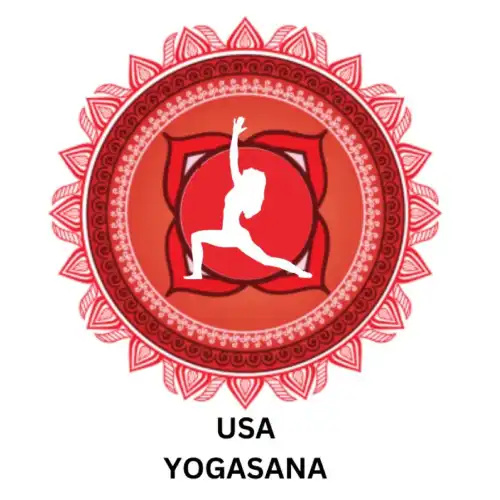About Us
Our Vision
At Yoga Association USA, we envision a healthier and more harmonious environment where Yogasana is not just a form of exercise but a way of life. Our vision is to integrate the ancient wisdom of yoga with modern sports, creating a platform for individuals to excel in the art of yoga asana and compete at both national and international levels.
Our Mission
Our mission is to promote, develop, and elevate Yogasana as a recognized sport across the nation, fostering physical, mental, and spiritual well-being for individuals of all ages and backgrounds. Our mission is to promote, develop, and elevate Yogasana as a recognized sport across the nation, fostering physical, mental, and spiritual well-being for individuals of all ages and backgrounds.
Who We Are
Yoga Association USA is a non-profit organization. An apex body dedicated to the growth and advancement of Yogasana as a competitive sport. We are recognized by the General Council of India, USA, and the government of the USA. We are committed to maintaining the authenticity, integrity, and inclusivity of Yogasana as we progress in the modern sports arena.
Our mission is to promote, develop, and elevate Yogasana as a recognized sport across the nation, fostering physical, mental, and spiritual well-being for individuals of all ages and backgrounds.
Affiliate Partners





Yogasana As A Sports
It is believed that yoga competitions began over hundreds of years ago in India. Today several yoga competitions are held all over the world and at various levels. The concept of Yoga as a sport is quite promising. As we all know, immemorial yoga has been a way to improve the physical and mental well-being of people of all ages and fitness levels. And now, Yoga Postures as a sport will also preserve India’s rich culture and heritage. Yoga keeps every muscle in the body engaged. It is a full-body workout and, thus, is a very effective form of physical activity. Yoga Postures as a competitive sport can develop an interest in yoga among people across the world.
The Fit India Movement initiated by the Indian Government has gained impetus and the government has promoted yoga as a healthy practice to stay fit. Since the inception of International Yoga Day, the growth prospect for Yoga has been immense. Yogasana as a sport may not be welcomed by some yoga practitioners at the early stages of its inception, but gradually, it will be further integrated with athletics and will be seen as a way to have a healthy and competitive life.
However, even in the history of Indian mythology, there existed competitions, and thus Yoga as a sport will be accepted easily. And in modern times when physical fitness is being given importance, promoting Yoga as a sport will increase participation and preserve the rich culture it has a base, with. Yoga organizations and institutions worldwide have been campaigning to turn yoga asana into a competitive sport. Despite yoga having strong roots in India, it is extremely popular in the West. The demand for yoga is growing in Europe and America. Yoga as an Olympic event would create a widespread opportunity to expand awareness of yoga and its myriad health benefits. Traditional Yogasana Competition Artistic Yogasana Competition.
Yoga
The concepts and practices of Yoga originated in India about several thousand years ago. Its founders were great Saints and Sages. The great Yogis presented rational interpretations of their experiences of Yoga and brought about a practical and scientifically sound method within everyone’s reach. Yoga today is no longer restricted to hermits, saints, and sages; it has entered into our everyday lives and has aroused a worldwide awakening and acceptance in the last few decades. The science of Yoga and its techniques have now been reoriented to suit modern sociological needs and lifestyles. Experts in various branches of medicine including modern medical sciences are realizing the role of these techniques in the prevention and mitigation of diseases and the promotion of health.
Yoga is one of the six systems of Vedic philosophy. Maharishi Patanjali, rightly called “The Father of Yoga” compiled and refined various aspects of Yoga systematically in his “Yoga Sutras” (aphorisms). He advocated the eightfold path of Yoga, popularly known as “Ashtanga Yoga” for the all-round development of human beings. They are: – Yama, Niyama, Asana, Pranayama, Pratyahara, Dharana, Dhyana and Samadhi. These components advocate certain restraints and observances, physical discipline, breath regulations, restraining the sense organs, contemplation, meditation, and samadhi. These steps are believed to have a potential for improvement of physical health by enhancing circulation of oxygenated blood in the body, retraining the sense organs thereby inducing tranquility and serenity of mind. The practice of Yoga prevents psychosomatic disorders and improves an individual’s resistance and ability to endure stressful situations.
Definition of Yoga
Yoga is a discipline to improve or develop one’s inherent power in a balanced manner. It offers the means to attain complete self-realization. The literal meaning of the Sanskrit word Yoga is ’Yoke’. Yoga can therefore be defined as a means of uniting the individual spirit with the universal spirit of God. According to Maharishi Patanjali, Yoga is the suppression of modifications of the mind.
Yoga is a universal practical discipline
Yoga is universal for practice and application irrespective of culture, nationality, race, caste, creed, sex, age, and physical condition. Neither by reading the texts nor by wearing the garb of an ascetic, one can become an accomplished Yogi. Without practice, no one can experience the utility of Yogic techniques nor can realize their inherent potential. Only regular practice (sadhana) creates a pattern in body and mind to uplift them. It requires a keen desire on the part of the practitioner to experience higher states of consciousness through training the mind and refining the gross consciousness.
Yoga as an evolutionary process
Yoga is an evolutionary process in the development of human consciousness. Evolution of total consciousness does not necessarily begin in any man rather it begins only if one chooses it to begin. The vices like the use of alcohol and drugs, working exhaustively, and indulging too much in sex and other stimulation are to seek oblivion, a return to unconsciousness. Indian yogis begin from the point where Western psychology ends. If Freud’s psychology is the psychology of disease and Maslow’s psychology is the psychology of the healthy man, then Indian psychology is the psychology of enlightenment. In Yoga, it is not a question of the psychology of man rather it is a question of higher consciousness. It is not also a question of mental health, rather, it is a question of spiritual growth.
Yoga as Soul Therapy
All paths of Yoga (Japa, Karma, Bhakti, etc.) have healing potential to shelter out the effects of pain. However, one especially needs proper guidance from an accomplished exponent, who has already trodden the same track to reach the goal. The path is to be chosen very cautiously in view of his aptitude either with the help of a competent counselor or consulting an accomplished Yogi.
Types of Yoga
- Japa Yoga
- Karma Yoga
- Gyana Yoga
- Bhakti Yoga
- Raja Yoga
- Swara Yoga
- Kundalini
- Nadi
Japa Yoga
To concentrate one’s mind on a divine name or holy syllable, mantra, etc. like ’OM’, ‘Rama’, ’Allah’, ’God’, or ’Vahe Guru’, etc. through repeated recitation or remembrance.
Karma Yoga
Teaches us to perform all actions without having any desire for their fruit. In this sadhana, a Yogi considers his duty as divine action, performing it with whole-hearted dedication but shuns away all desires.
Gyana Yoga
Teaches us to discriminate between self and non-self and to acquire the knowledge of one’s spiritual entity through the study of scriptures, a company of Saints, and practices of meditation.
Bhakti Yoga
Bhakti Yoga, is a system of intense devotion with emphasis on complete surrender to divine will. The true follower of Bhakti Yoga is free from egoism and remains humble and unaffected by the dualities of the world.
Raja Yoga
Raja Yoga popularly known as “Ashtanga Yoga” is for the all-round development of human beings. These are Yama, Niyama, Asana, Pranayama, Pratyahara, Dharana, Dhyana and Samadhi.
Swara Yoga
Swara Yoga is Science, which is about the realization of cosmic consciousness, through awareness/ observation and then control/ manipulation of the flow of breath in the nostrils. Swara Yoga involves the systematic study of the breath flowing through the nostril (or Swara) in relation to the prevailing phases of the Sun, Moon, time of day, and direction. It is the association of the breath in relation to the activities or phases or positions of the Sun, Moon, Planets, Seasons, and Time of day, with the physical and mental conditions of the individual and then taking the appropriate action according to these subtle relations.
Kundalini
Kundalini Yoga is a part of Tantric Tradition. Since the dawn of creation, the Tantrics and yogis have realized that in this physical body, there is a potential force residing in Muladhara Chakra, the first of seven Chakras. The seat of Kundalini is a small gland at the base of the spinal cord. In the masculine body it is in the perineum between the urinary and excretory organs. In the female body its location is at the root of the uterus in the cervix. Those people who have awakened this supernatural force have been called Rishis, Prophets, Yogis, Siddhas and other names according to the time, tradition and culture.
To awaken the Kundalini, you must prepare yourself through yogic techniques such as Shatkriya, Asana, Pranayama, Bandha, Mudra and Meditation. The awakening of Kundalini results in an explosion in the brain as the dormant or sleeping areas start blooming like flowers.
Nadi
As described by Yogic texts, Nadis are flows of energy that we can visualize at the psychic level as having distinct channels, light, color, sound, and other characteristics. The entire network of nadis is so vast that even yogic texts differ in their calculations of the exact number. References in the Goraksha Sataka or Goraksh Samhita and Hatha Yoga Pradipika place their number at 72,000; emerged from the navel center- the Manipuri Chakra. Of all the thousands of Nadis, Susumna is said to be the most important. The Shiva Swarodaya enumerates ten major Nadis which connect to the ‘doorways’ leading in and out of the body. Of these ten, Ida, Pingala, and Sushumna are the most important, they are the high-voltage wires which conduct the energy to the substations or Chakras situated along the spinal column.